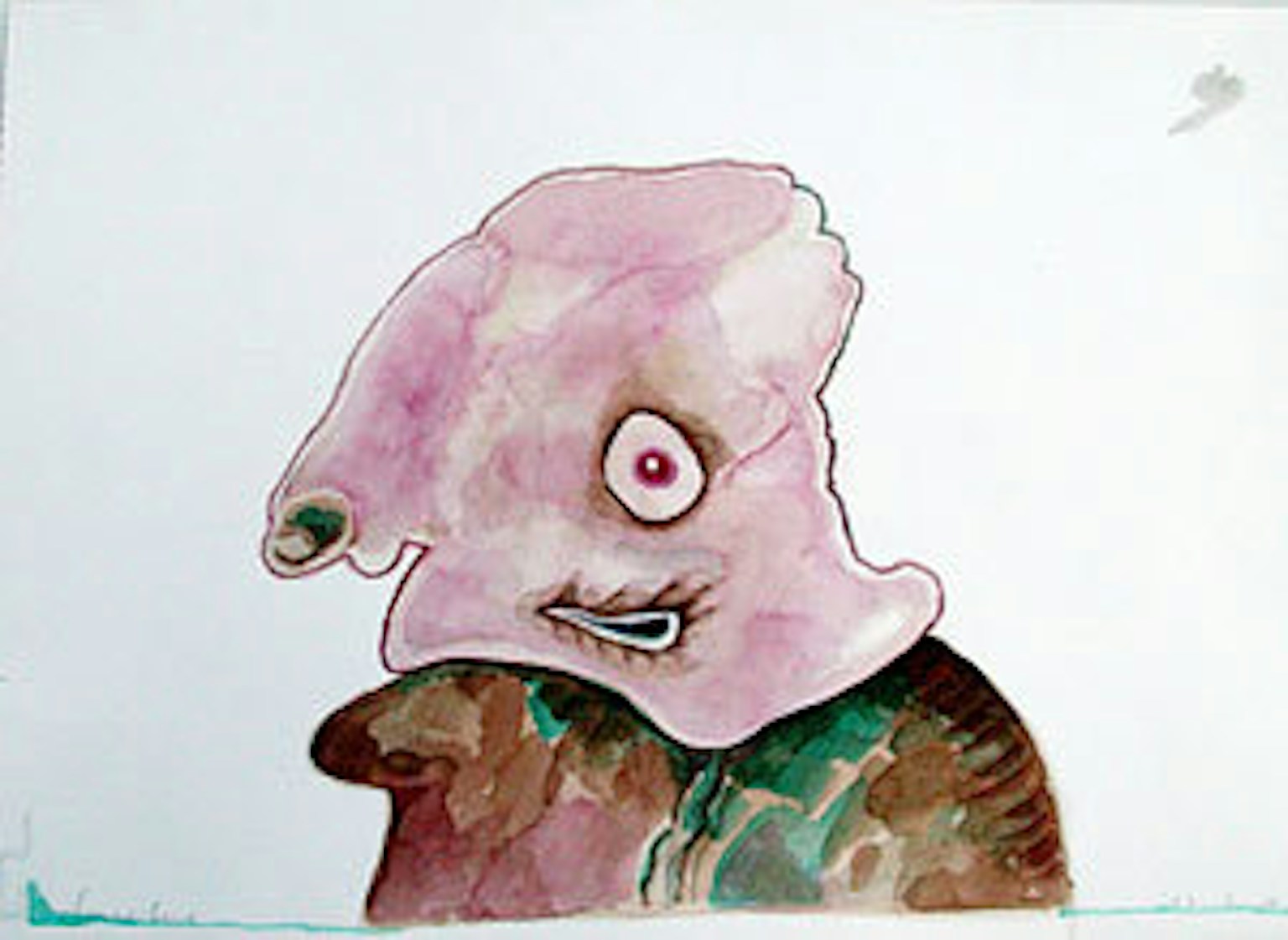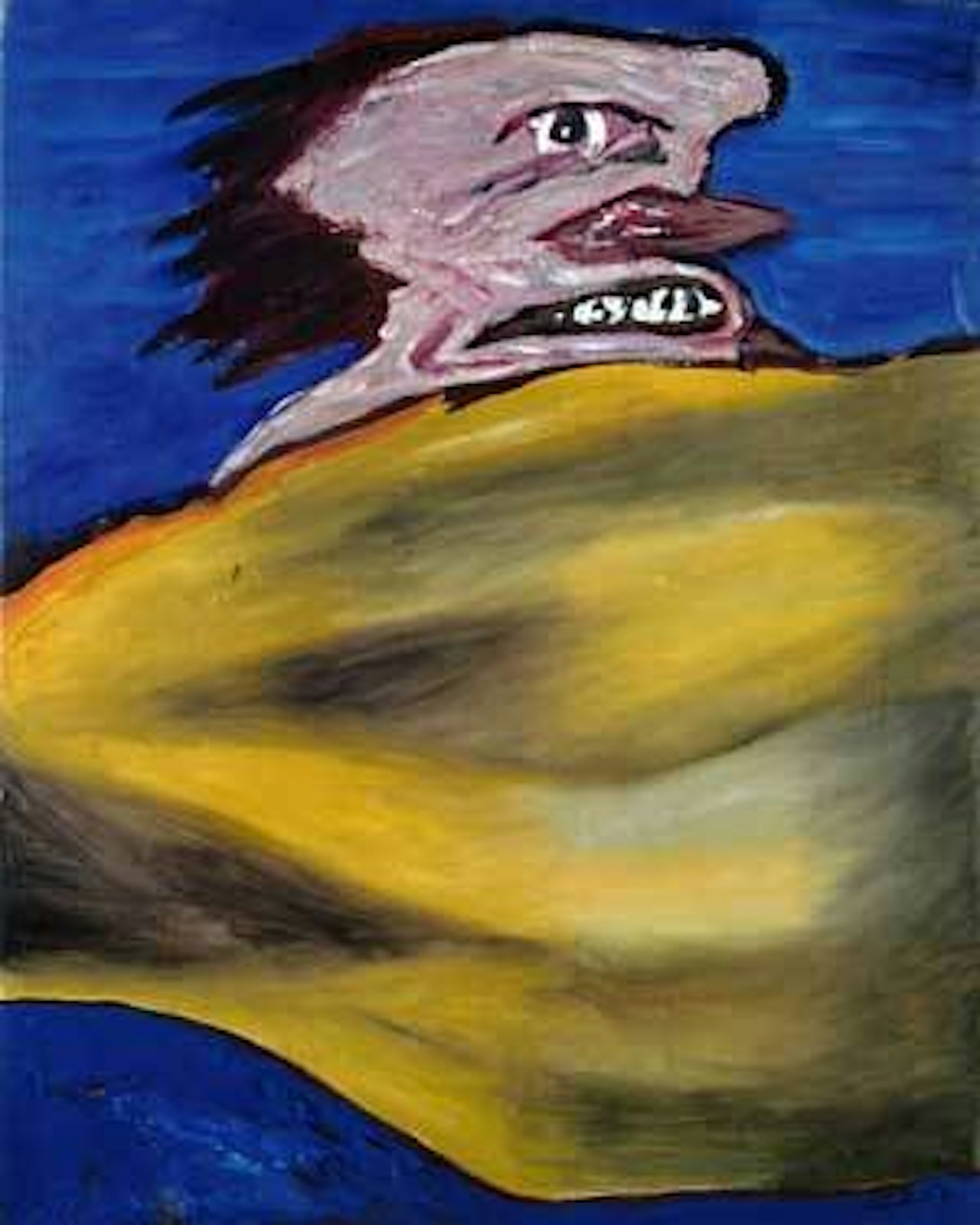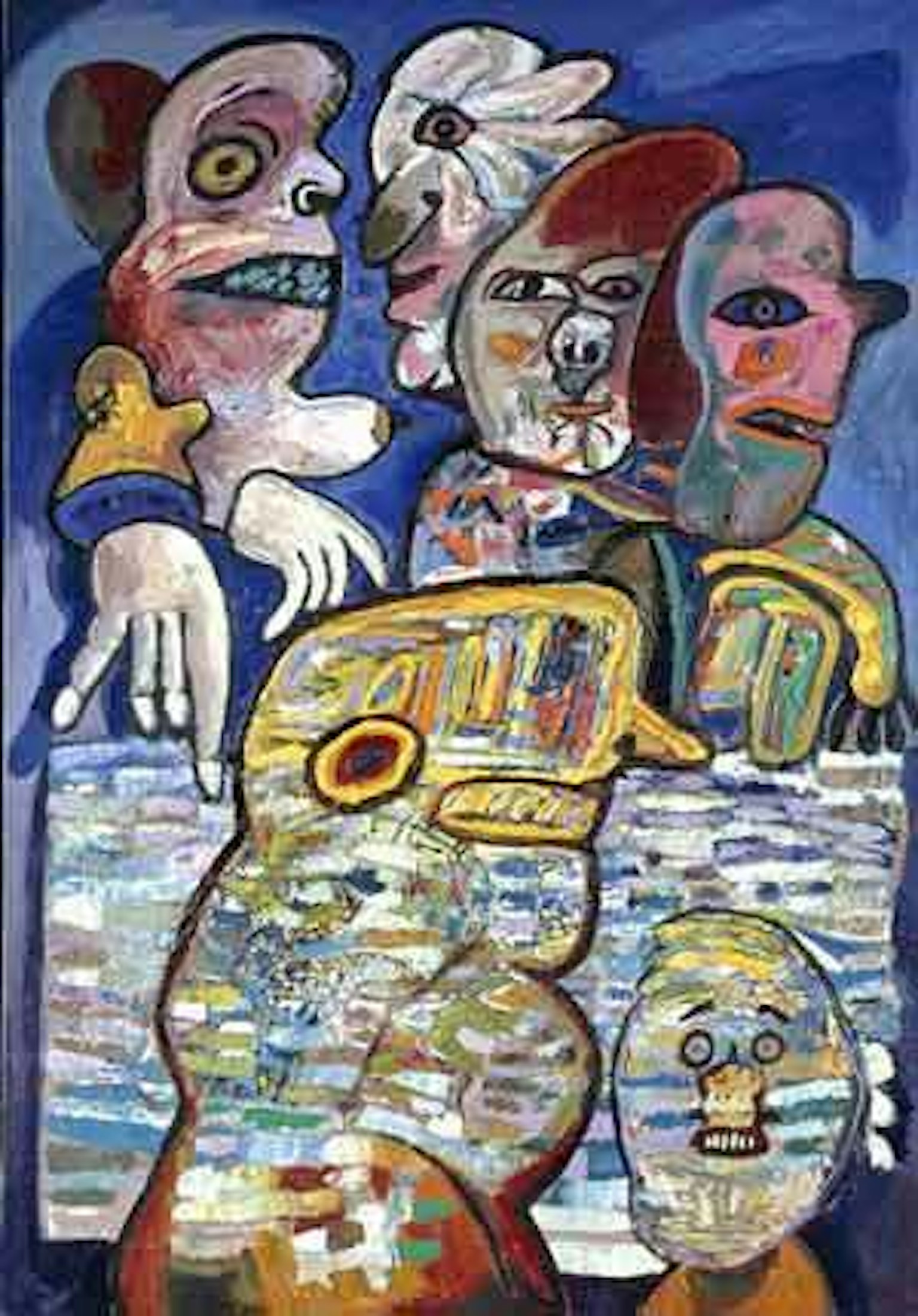Lucebert is the pseudonym of the poet and artist Lubertus Jacobus Swaanswijk (Amsterdam, 1924-94) and means something like ‘bringer of light’.
Lucebert is best known as a giant of Dutch literature, whereas in addition to being a poet he was also an active painter, graphic artist, photographer and ceramist. He is often considered to be a representative of the postwar Cobra movement, although in fact he was only indirectly involved in this group. He did take part in the legendary Cobra exhibition at the Stedelijk Museum in Amsterdam in 1949, but only as a poet. Although in his early years he was influenced as an artist by such people as Appel and Constant (especially in his oil paintings, in which mythical creatures and anthropoid animals are painted spontaneously in either vivid and radiant or more subdued colours), he nevertheless soon distanced himself from the Cobra group. In this earliest phase of his development one can still see clear references to Picasso, Surrealism and especially Dubuffet. It was only from the late fifties, or even the early sixties, that Lucebert put himself forward emphatically as an artist and developed a mature style of his own.
A characteristic of his personal style is his unflagging energy, industriousness and creative urge. He launched into several drawings, paintings and gouaches every day and his oeuvre consequently comprises thousands of works. In his case one can certainly say there was a true symbiosis between life and the production of art: he converted his vital energy into an almost endless series of creations. The exhibition at the SMAK is conceived as a search for the essence of Lucebert’s art. In an attempt to fathom it, the exhibition is arranged as an episodic triptych with an introduction in the form of a confrontation between a number of famous paintings by Lucebert and works by his contemporaries (from the SMAK collection) such as Appel, Bacon and Saura. The emphasis in the first part is on line. In selecting works for this part of the exhibition we deliberately opted for portraits and ‘heads’. In these drawings, watercolours and graphic works Lucebert plays with art history in a masterly way. He refers to Roman coins, Renaissance paintings and the world of caricature. Lucebert not only drew a fluent line, he also sought diversity in the area of graphics, and graphic concepts which he then let develop into forms and figures. He liked extremely linear boundaries; so he invariably defined his figures with forceful black outlines. At first sight his chaotic compositions seem to express the urge for spontaneous self-expression, but when analysed again it becomes clear that his works are much more considered and deliberately composed - at least, the outlines point clearly in that direction. In the second section, the attention is focused on his more gruesome poetical-political work. The content of these works often displays an intense rawness: he sketches a hard and plainly cynical world. The political dimension is by no means pamphleteering, but the references to such things as the Franco regime are more than obvious in the five parts of De Ketters [The Heretics] (1981). In this series of paintings one comes across reminders of the work of Goya, Severini and even Bacon. The third section focuses on Lucebert’s masterly use of colours. Here too it is striking that he continues to experiment with various styles and forms, the primary aim being to give shape to the instinctive aspirations of the content. By means of this initially apparently arbitrary division, we have tried to approach Lucebert’s art as closely as possible. In this light, his poetry had to form an essential part. Although his poems do not serve to clarify his artistic work or vice versa, they are two related areas of art that travel similar roads. It is precisely for this reason that a confrontation with Lucebert’s poetry seems well-placed here. And then of course there is the voice of the artist himself, which, like his pen and his brush, he uses to bring light to the proverbial darkness.



